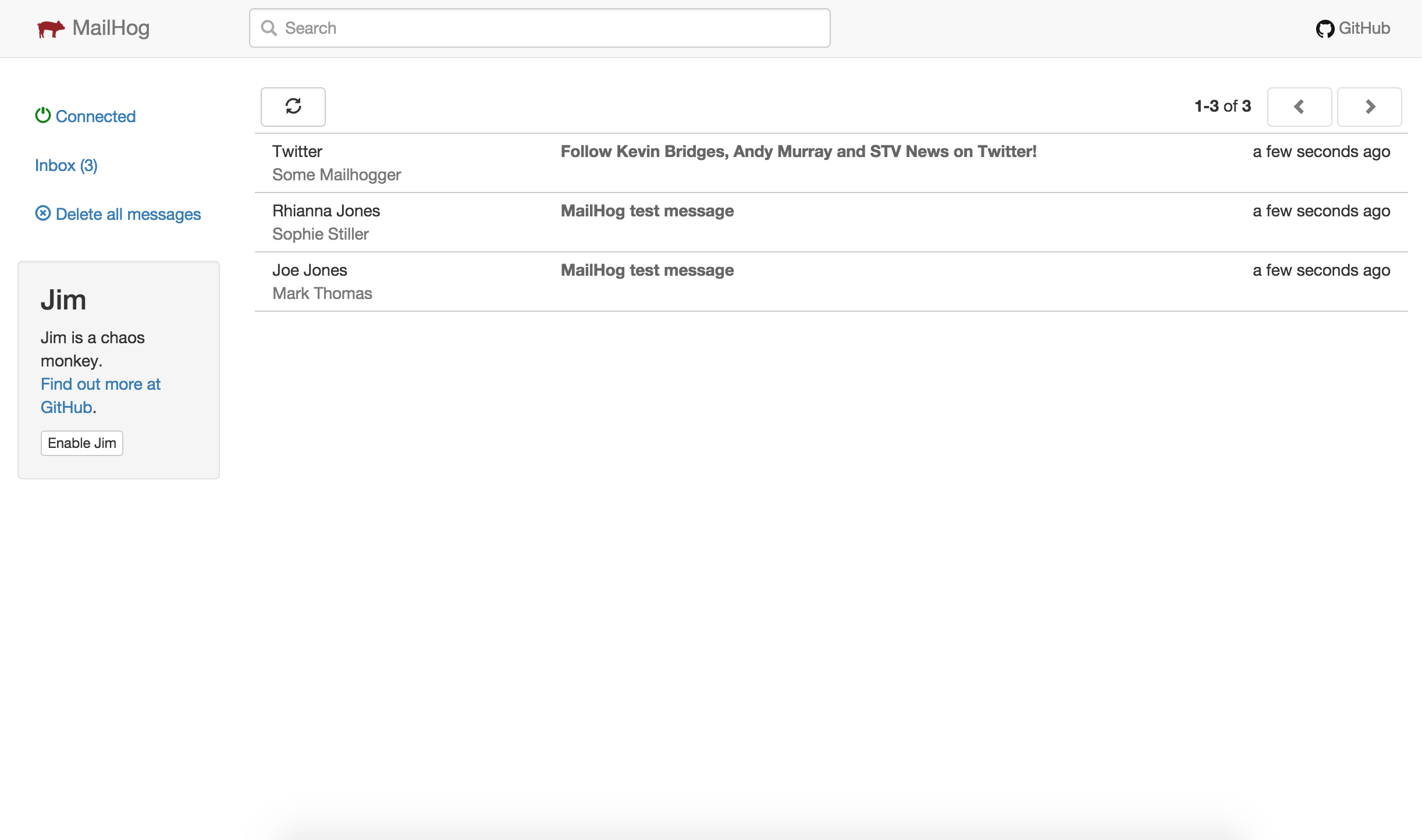Inspired by MailCatcher, easier to install.
- Download and run MailHog
- Configure your outgoing SMTP server
- View your outgoing email in a web UI
- Release it to a real mail server
Built with Go - MailHog runs without installation on multiple platforms.
MailHog is an email testing tool for developers:
- Configure your application to use MailHog for SMTP delivery
- View messages in the web UI, or retrieve them with the JSON API
- Optionally release messages to real SMTP servers for delivery
Download the latest release for your platform. Then read the deployment guide for deployment options.
brew update && brew install mailhogThen, start MailHog by running mailhog in the command line.
sudo apt-get -y install golang-go
go get github.com/mailhog/MailHogsudo apt-get -y install golang-go
go install github.com/mailhog/MailHog@latestThen, start MailHog by running /path/to/MailHog in the command line.
E.g. the path to Go's bin files on Ubuntu is ~/go/bin/, so to start the MailHog run:
~/go/bin/MailHogpkg install mailhog
sysrc mailhog_enable="YES"
service mailhog startRun it from Docker Hub or using the provided Dockerfile
Check out how to configure MailHog, or use the default settings:
- the SMTP server starts on port 1025
- the HTTP server starts on port 8025
- in-memory message storage
See MailHog libraries for a list of MailHog client libraries.
- ESMTP server implementing RFC5321
- Support for SMTP AUTH (RFC4954) and PIPELINING (RFC2920)
- Web interface to view messages (plain text, HTML or source)
- Supports RFC2047 encoded headers
- Real-time updates using EventSource
- Release messages to real SMTP servers
- Chaos Monkey for failure testing
- See Introduction to Jim for more information
- HTTP API to list, retrieve and delete messages
- HTTP basic authentication for MailHog UI and API
- Multipart MIME support
- Download individual MIME parts
- In-memory message storage
- MongoDB and file based storage for message persistence
- Lightweight and portable
- No installation required
mhsendmail is a sendmail replacement for MailHog.
It redirects mail to MailHog using SMTP.
You can also use MailHog sendmail ... instead of the separate mhsendmail binary.
Alternatively, you can use your native sendmail command by providing -S, for example:
/usr/sbin/sendmail -S mail:1025For example, in PHP you could add either of these lines to php.ini:
sendmail_path = /usr/local/bin/mhsendmail
sendmail_path = /usr/sbin/sendmail -S mail:1025
MailHog is a rewritten version of MailHog, which was born out of M3MTA.
Clone this repository to $GOPATH/src/github.com/mailhog/MailHog and type make deps.
See the Building MailHog guide.
Requires Go 1.4+ to build.
Run tests using make test or goconvey.
If you make any changes, run go fmt ./... before submitting a pull request.
Copyright © 2014 - 2017, Ian Kent (https://iankent.uk)
Released under MIT license, see LICENSE for details.
